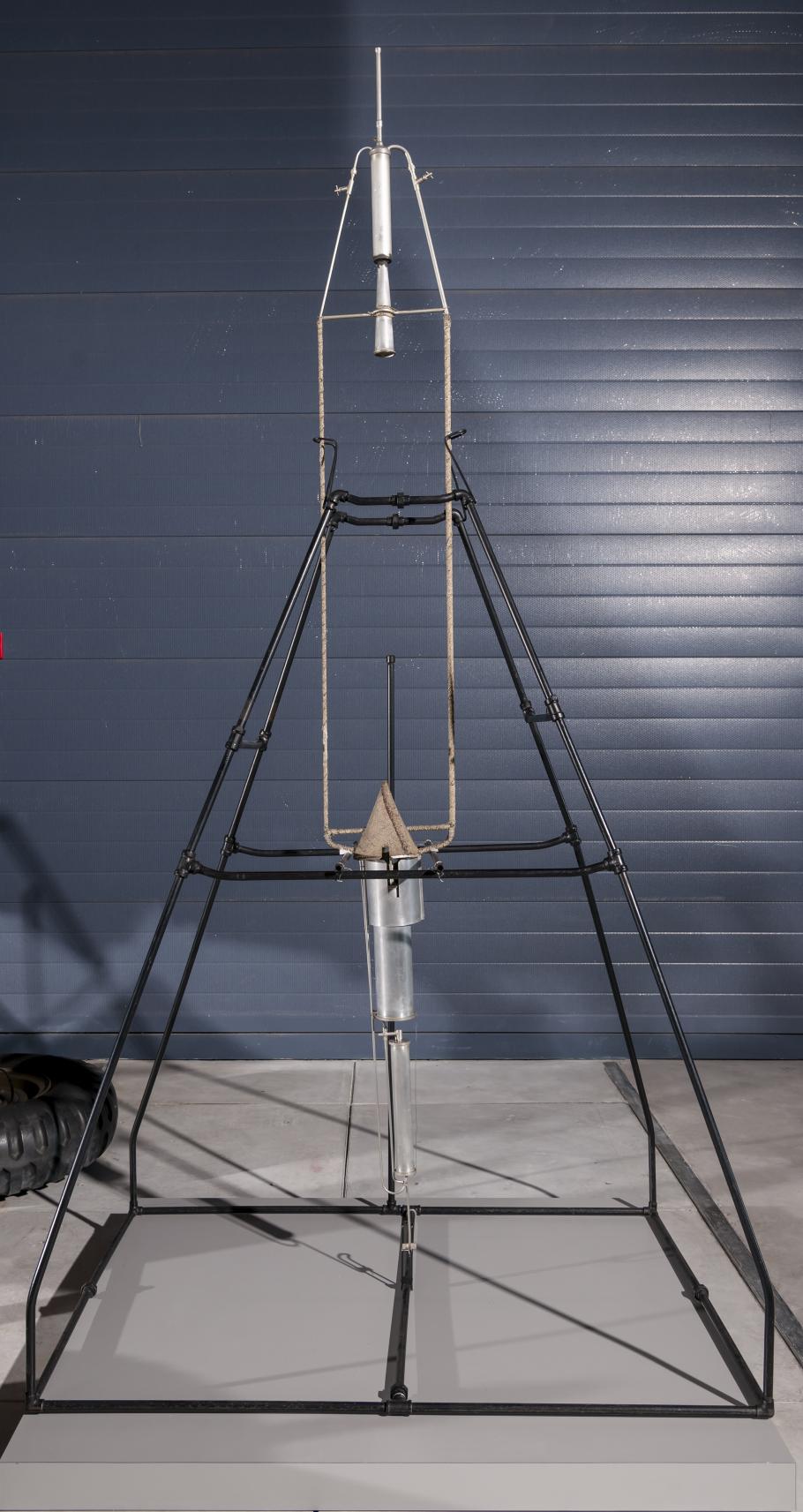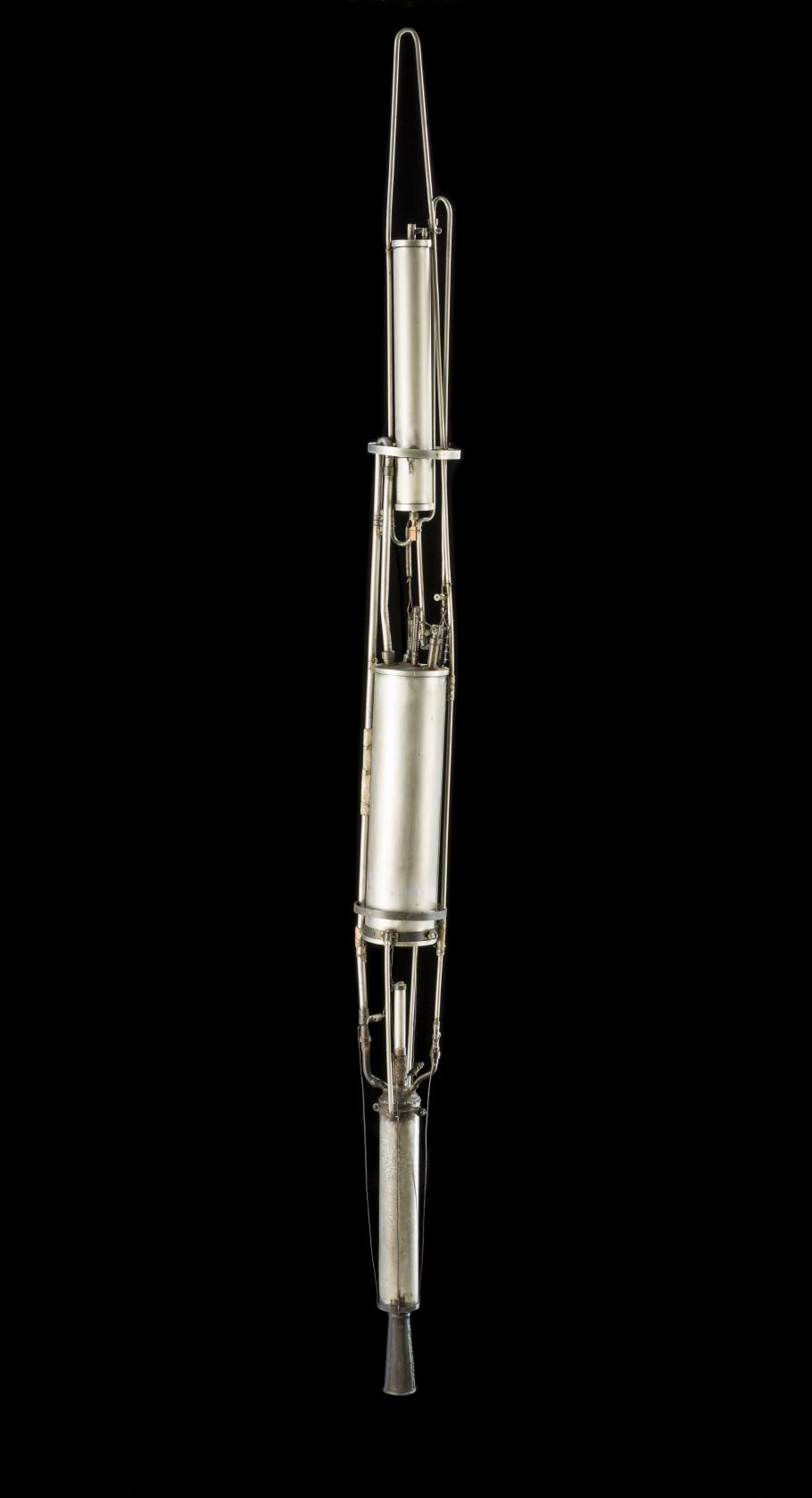On March 16, 1926, Robert H. Goddard (1882-1945) launched the world’s first liquid-propellant rocket. His rickety contraption, with its combustion chamber and nozzle on top, burned for 20 seconds before consuming enough liquid oxygen and gasoline to lift itself off the launch rack. The rocket took off from a snowy field outside Worcester, Massachusetts, reaching a height of about 12.5 meters (41 feet) and a distance of 56 meters (184 feet). It was smashed on impact. Goddard, his wife Esther, and a couple of assistants from Clark University, where he was a physics professor, were the only witnesses.
This event did not even make the local newspapers; indeed the reticent professor kept it secret for a decade. He told only a few people and, after a couple of weeks, Charles G. Abbot, the director of the Smithsonian Astrophysical Observatory (and the institution’s Secretary after 1928). The Smithsonian had funded Goddard since 1917, in the hope that his rocket could lift instruments above the atmosphere—the observatory’s main program was measuring solar variability and output.
In January 1920, the Institution had inadvertently made Goddard world-famous when it published his short, often mathematical treatise, A Method of Reaching Extreme Altitudes. A Smithsonian press release, long lost, noted his proposal to hit the night side of the Moon with a rocket carrying flash powder. The story spread quickly around the world—a scientist had legitimized the idea that Moon travel might even be possible. But the press flap also produced a lot of sensationalism. Volunteers wrote to Goddard asking to join the crew of his imminent lunar voyage.
Afterward he was not reluctant thereafter to talk to the press in general terms, but he remained secretive about his technical experiments. He was afraid others might steal his inventions, as he was convinced he was the first person in the world to imagine how to make spaceflight feasible. His paranoia only increased after the German space enthusiasts became active in the 1920s.
In 1930, Goddard received greater funding when famed aviator Charles Lindbergh intervened with the Guggenheim foundation. The Clark University professor spent most of the 1930s in Roswell, New Mexico, building and launching much larger rockets. When the Smithsonian, Lindbergh, and Harry Guggenheim pushed Goddard into publishing another report in 1936, he finally revealed the 1926 launch. Yet, as impressive as some of his work in Roswell was, he continued to resist the entreaties of his funders to seek help when his promises to reach the upper atmosphere never materialized.
In fact, Goddard’s liquid-propellant rocket work turned out to be close to a dead-end because he was reluctant to share it with anyone. It was the Germans who made the breakthrough to large-scale rocketry with the V-2. Goddard went to his deathbed convinced that the Nazis had stolen their technology from him. His real importance did not turn out to be inventing liquid-propellant rocketry, although no one can take his first away. He inspired others, however, to believe that space travel would happen if rocketry was developed.
Retired National Air and Space Museum curator Frank Winter has shown the global impact of A Method of Reaching Extreme Altitudes. Almost immediately, science-fiction, movies, and non-fiction accounts incorporated the rocket as the fundamental technology for spaceflight. Before 1920, it was only one among many ideas and fantasies. The traditional gunpowder rocket was unimpressive and the laws of physics were widely misunderstood. After Goddard’s publication, and that of other pioneers in Soviet Russia and the German-speaking world, opinion began to change. Robert Goddard thus, almost in spite of himself, paved the way for us to escape the Earth, just as he had long dreamed.


